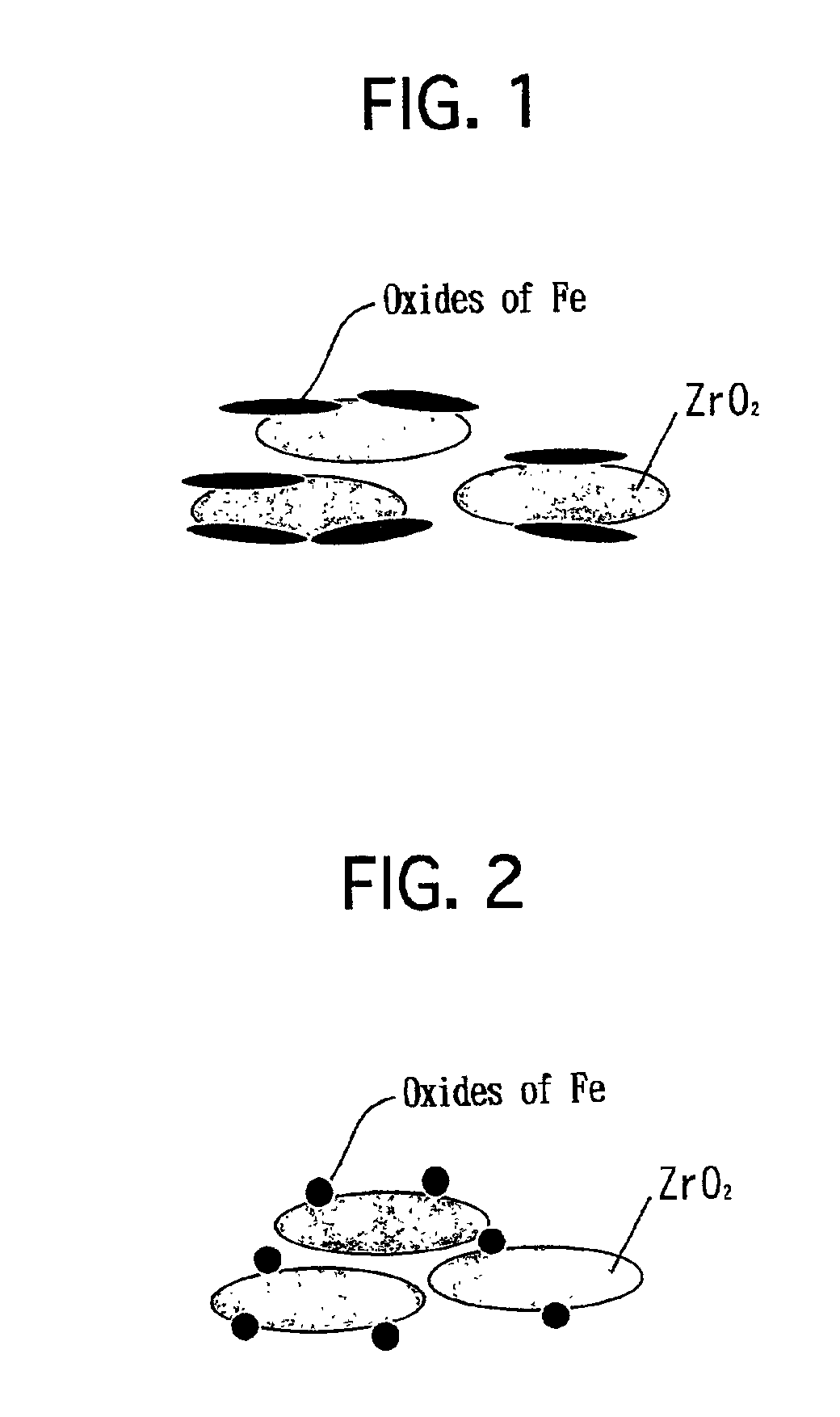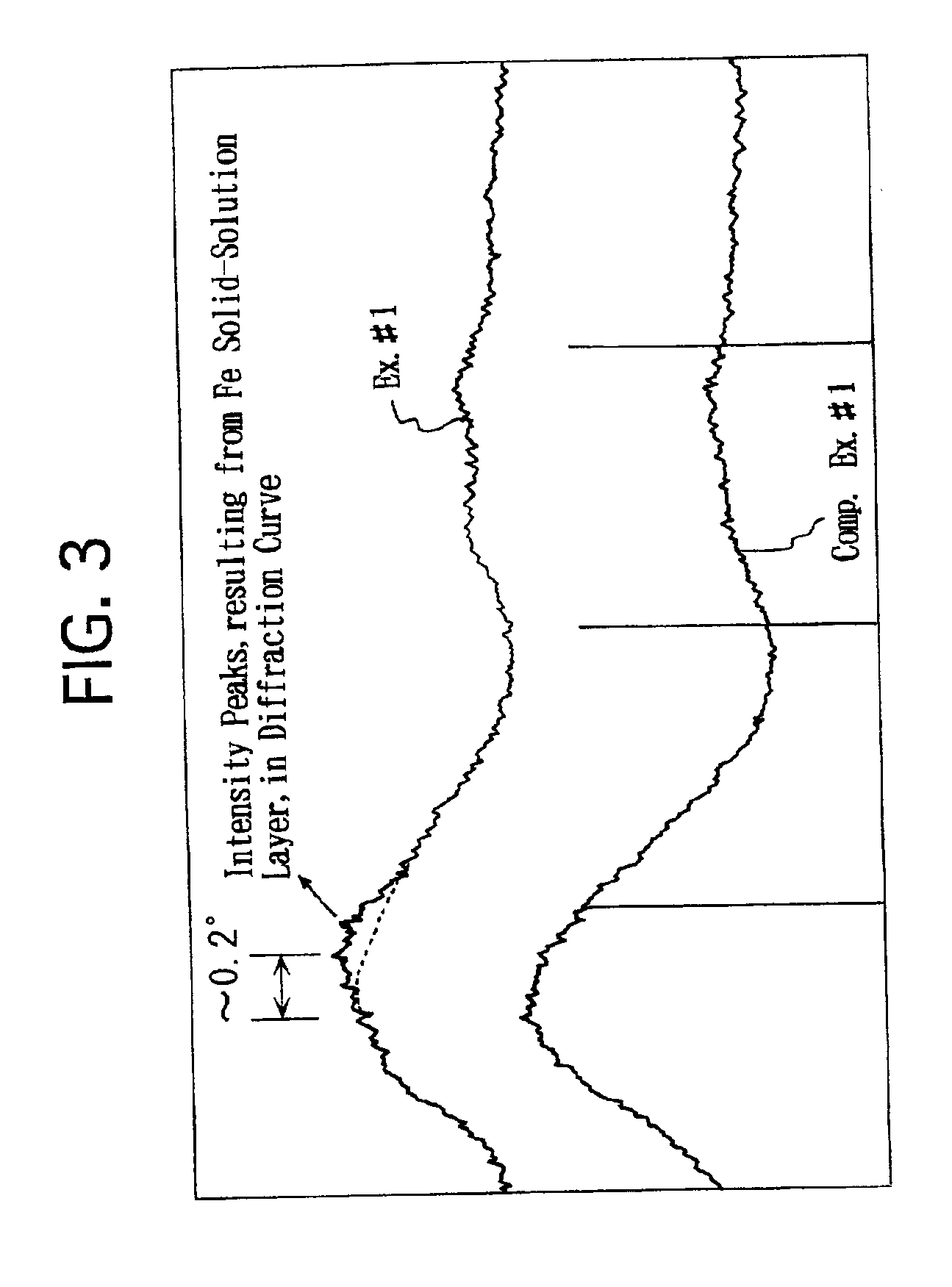Catalyst for purifying exhaust gas
a technology of catalyst and exhaust gas, which is applied in the field of catalyst, can solve the problems of many problems that must be solved in the apparatus, the filter may suffer from cracks, and the apparatus may be complicated in terms of the system, so as to achieve the effect of efficient purification of not only co and h
- Summary
- Abstract
- Description
- Claims
- Application Information
AI Technical Summary
Benefits of technology
Problems solved by technology
Method used
Image
Examples
example no.1
EXAMPLE No. 1
[0043]A neodymium nitrate (Nd(NO3)3) aqueous solution was impregnated into a commercially available zirconia powder to load Nd thereon. Note that the zirconia powder exhibited a BET specific surface area of 100 m2 / g. The zirconia powder was dried at 150° C. for 1 hour. Thereafter, the zirconia powder was calcined at 800° C. in air for 2 hours. Thus, a heat-resistant zirconia powder was prepared. Note that the heat-resistant zirconia powder included Nd in an amount of 20 atomic % with respect to Zr. As set forth in Table 1 below, the heat-resistant zirconia powder exhibited a BET specific surface area of 69 m2 / g. According to the results of an X-ray diffraction analysis, it was verified that a part of Nd was solved into ZrO2.
[0044]Subsequently, 800 g of the resulting heat-resistant zirconia powder was mixed into 135 g of an iron nitrate (Fe(NO3)3.9H2O) aqueous solution. While fully stirring the mixture, the mixture was evaporated to dry at 120° C. The dried solid was pul...
example no.2
EXAMPLE No. 2
[0047]A cerium nitrate (Ce(NO3)3) aqueous solution was impregnated into a commercially available zirconia powder to load Ce thereon. Note that the zirconia powder exhibited a BET specific surface area of 100 m2 / g. The zirconia powder was dried at 150° C. for 1 hour. Thereafter, the zirconia powder was calcined at 800° C. in air for 2 hours. Thus, a heat-resistant zirconia powder was prepared. Note that the heat-resistant powder included Ce in an amount of 30 atomic % with respect to Zr. As set forth in Table 1 below, the heat-resistant zirconia powder exhibited a BET specific surface area of 57 m2 / g. According to the results of an X-ray diffraction analysis, it was verified that a part of Ce was solved into ZrO2.
[0048]Except that the heat-resistant zirconia powder with Ce added was used instead of the heat-resistant zirconia powder with Nd added, an exhaust gas purifying catalyst of Example No. 2 was prepared in the same manner as Example No. 1.
example no.3
EXAMPLE No. 3
[0049]Except that a commercially available zirconia powder was used instead of the heat-resistant zirconia powder with Nd added, an exhaust gas purifying catalyst of Example No. 3 was prepared in the same manner as Example No. 1. Note that the zirconia powder exhibited a BET specific surface area of 100 m2 / g.
PUM
| Property | Measurement | Unit |
|---|---|---|
| BET specific surface area | aaaaa | aaaaa |
| temperature | aaaaa | aaaaa |
| BET specific surface area | aaaaa | aaaaa |
Abstract
Description
Claims
Application Information
 Login to View More
Login to View More - R&D
- Intellectual Property
- Life Sciences
- Materials
- Tech Scout
- Unparalleled Data Quality
- Higher Quality Content
- 60% Fewer Hallucinations
Browse by: Latest US Patents, China's latest patents, Technical Efficacy Thesaurus, Application Domain, Technology Topic, Popular Technical Reports.
© 2025 PatSnap. All rights reserved.Legal|Privacy policy|Modern Slavery Act Transparency Statement|Sitemap|About US| Contact US: help@patsnap.com


